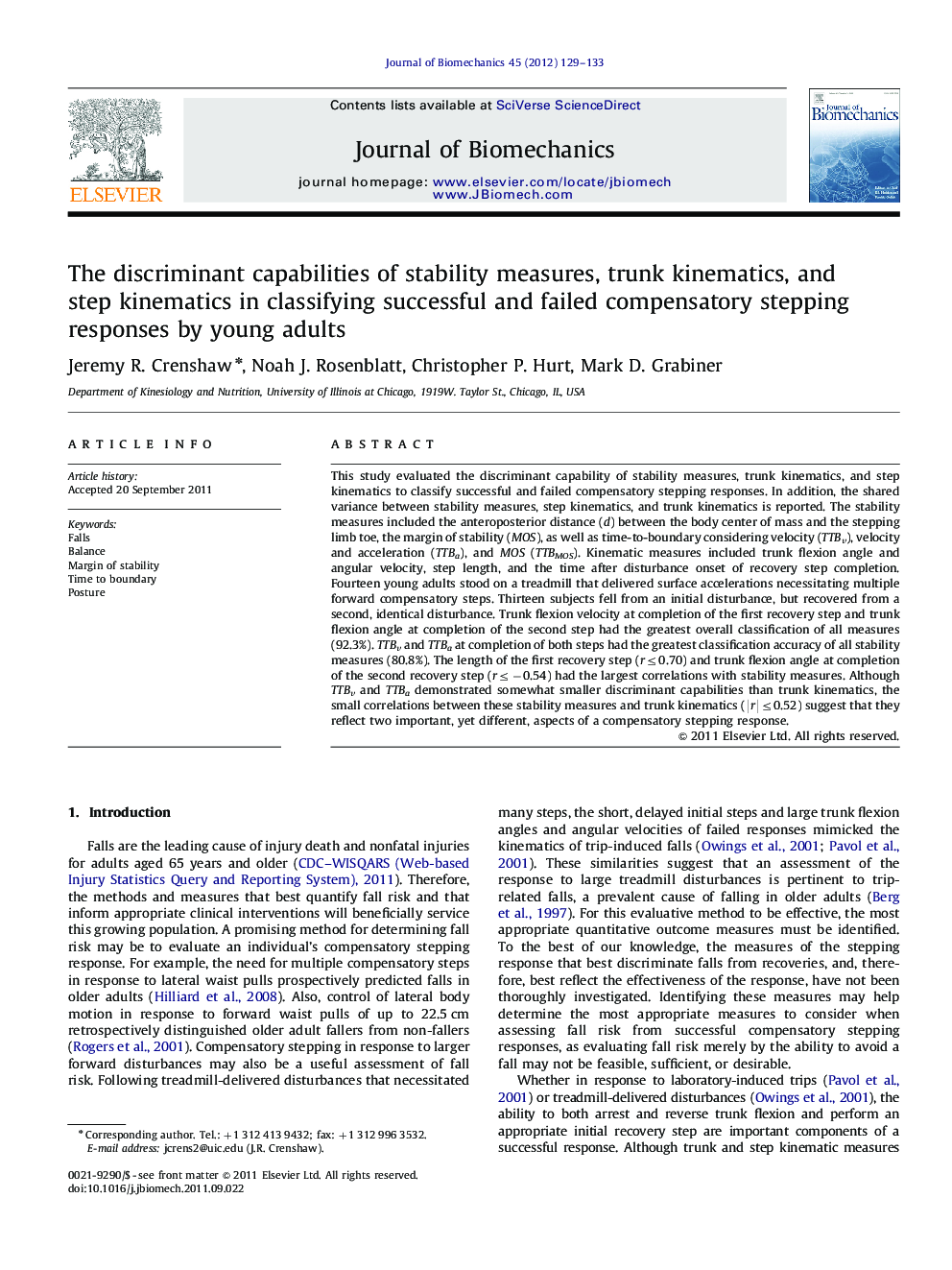| Article ID | Journal | Published Year | Pages | File Type |
|---|---|---|---|---|
| 10432538 | Journal of Biomechanics | 2012 | 5 Pages |
Abstract
This study evaluated the discriminant capability of stability measures, trunk kinematics, and step kinematics to classify successful and failed compensatory stepping responses. In addition, the shared variance between stability measures, step kinematics, and trunk kinematics is reported. The stability measures included the anteroposterior distance (d) between the body center of mass and the stepping limb toe, the margin of stability (MOS), as well as time-to-boundary considering velocity (TTBv), velocity and acceleration (TTBa), and MOS (TTBMOS). Kinematic measures included trunk flexion angle and angular velocity, step length, and the time after disturbance onset of recovery step completion. Fourteen young adults stood on a treadmill that delivered surface accelerations necessitating multiple forward compensatory steps. Thirteen subjects fell from an initial disturbance, but recovered from a second, identical disturbance. Trunk flexion velocity at completion of the first recovery step and trunk flexion angle at completion of the second step had the greatest overall classification of all measures (92.3%). TTBv and TTBa at completion of both steps had the greatest classification accuracy of all stability measures (80.8%). The length of the first recovery step (râ¤0.70) and trunk flexion angle at completion of the second recovery step (râ¤â0.54) had the largest correlations with stability measures. Although TTBv and TTBa demonstrated somewhat smaller discriminant capabilities than trunk kinematics, the small correlations between these stability measures and trunk kinematics (|r|â¤0.52) suggest that they reflect two important, yet different, aspects of a compensatory stepping response.
Related Topics
Physical Sciences and Engineering
Engineering
Biomedical Engineering
Authors
Jeremy R. Crenshaw, Noah J. Rosenblatt, Christopher P. Hurt, Mark D. Grabiner,
